In June 2023, NOAA and the state of Alaska announced a collaborative effort to identify Aquaculture Opportunity Areas (AOAs) in Alaska’s waters, focusing on sustainable invertebrates (shellfish, sea cucumber, etc.) and seaweed aquaculture. Through advanced analysis and stakeholder input, these AOAs will foster responsible aquaculture that balances environmental, economic, and cultural considerations.
In October 2023, NOAA announced the next phase of this process — a request for data, analysis, and information from the public to aid in the identification of AOAs in Alaska state waters as part of a 60-day comment period.
With a coastline longer than the lower 48 states combined, Alaska holds tremendous potential for aquaculture. Due to the size of this region of interest, NOAA is proposing to narrow the study areas to include only Alaska state waters within a 25-mile (40-kilometer) radius of coastal community population centers (based on 2010 census data) as a proxy for needed infrastructure to support aquaculture development in Alaska, and Alaska state waters that do not experience sea ice cover (based on a 10-year aggregate maximum sea ice cover reported by the U.S. National Ice Center).
Using these parameters, NOAA’s National Centers for Coastal Ocean Science (NCCOS) has identified preliminary study areas located off the southeast, southcentral, and southwest coasts of Alaska (see maps below). Please note: due to complete ice coverage for the Kenai and Anchorage population centers, maps for these areas are excluded.
Overview
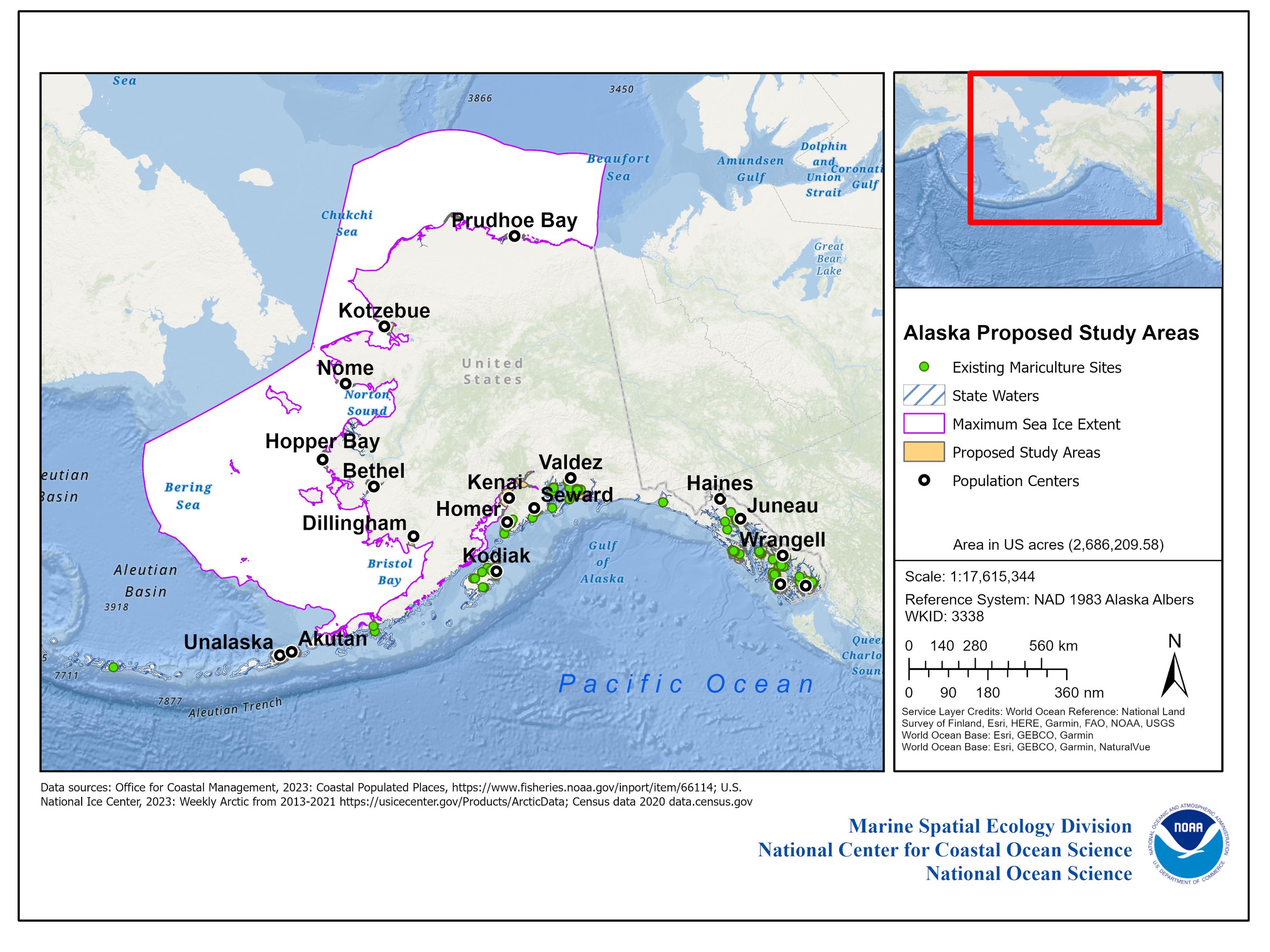
Southeast
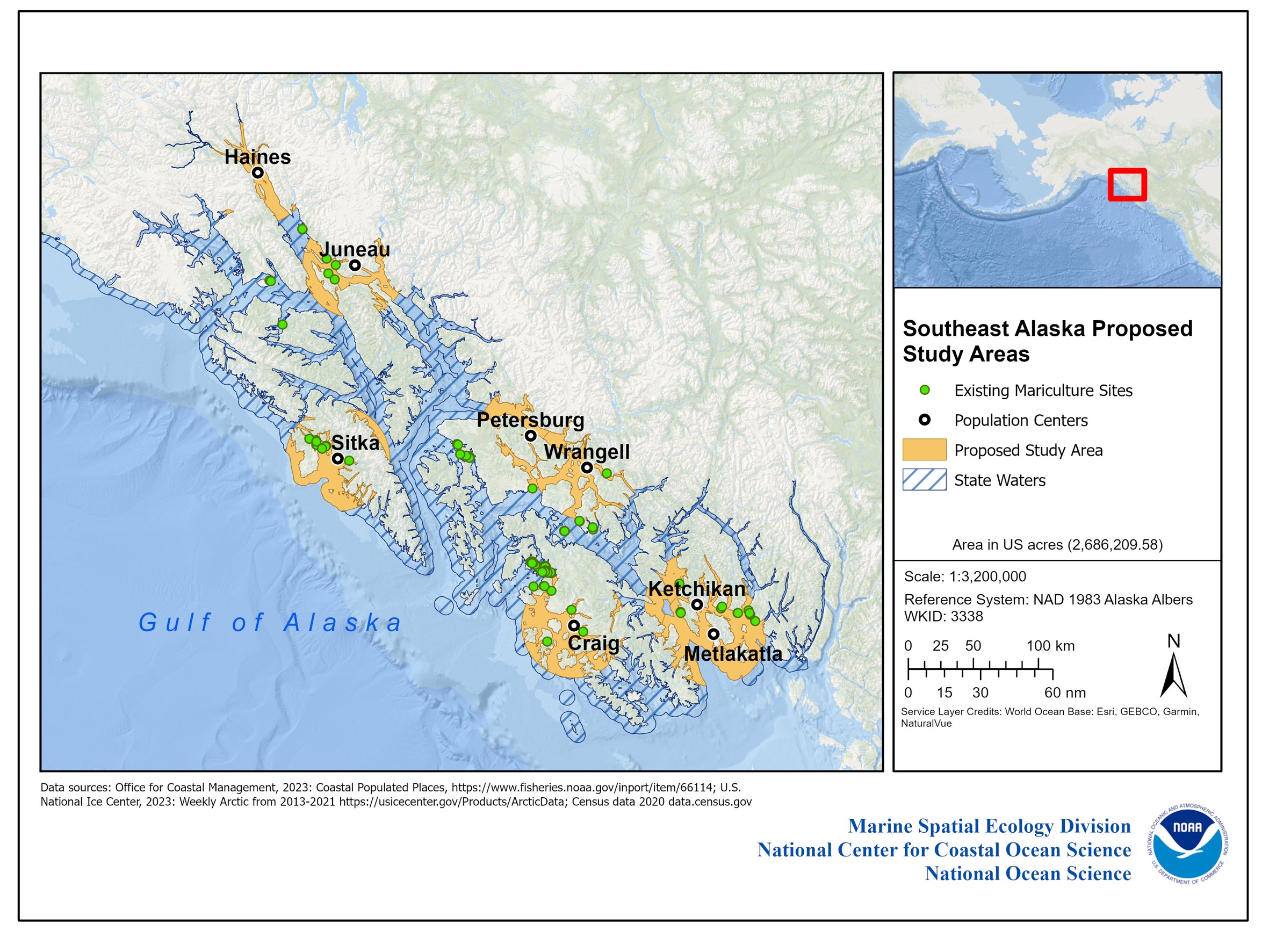
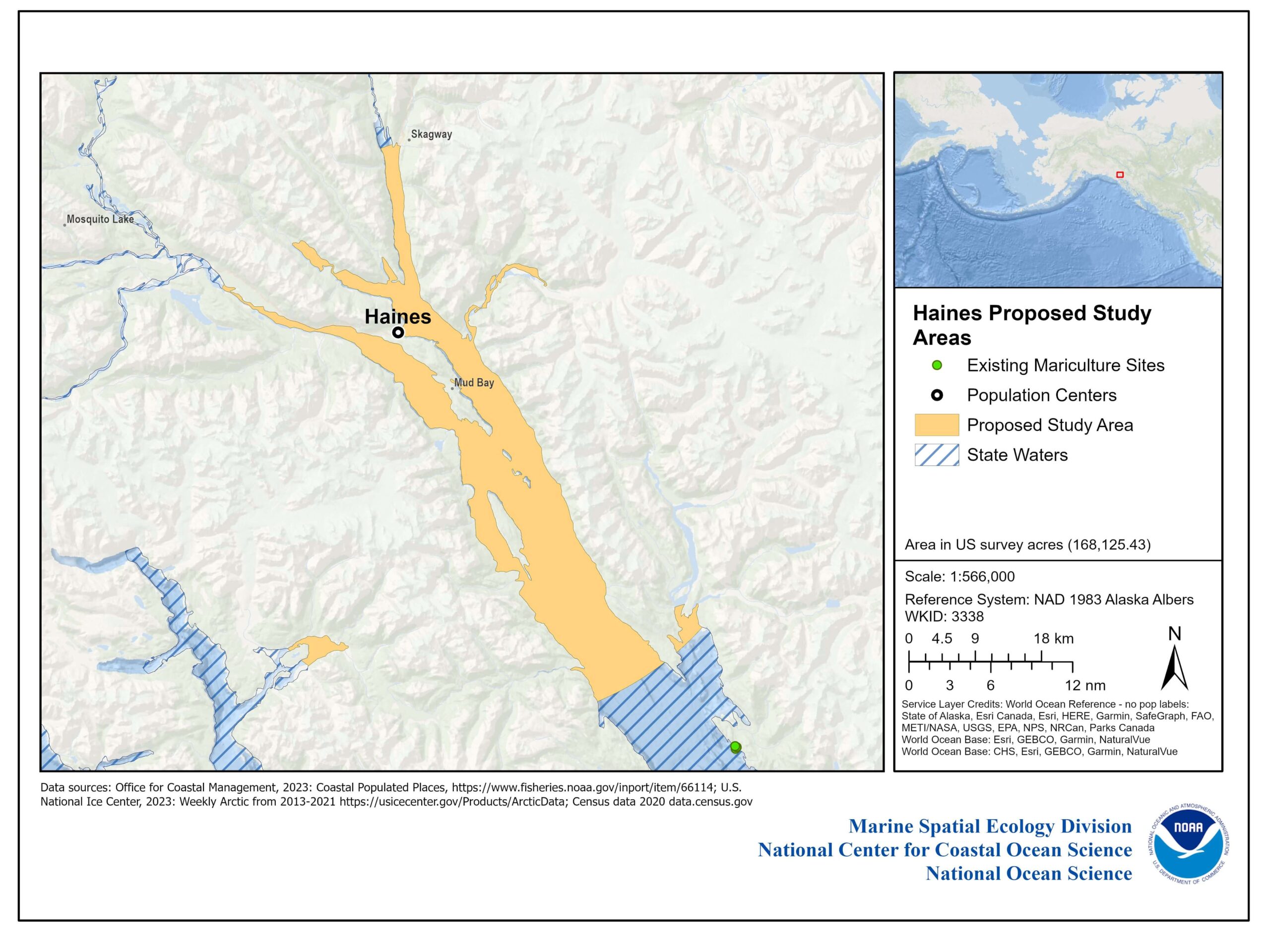
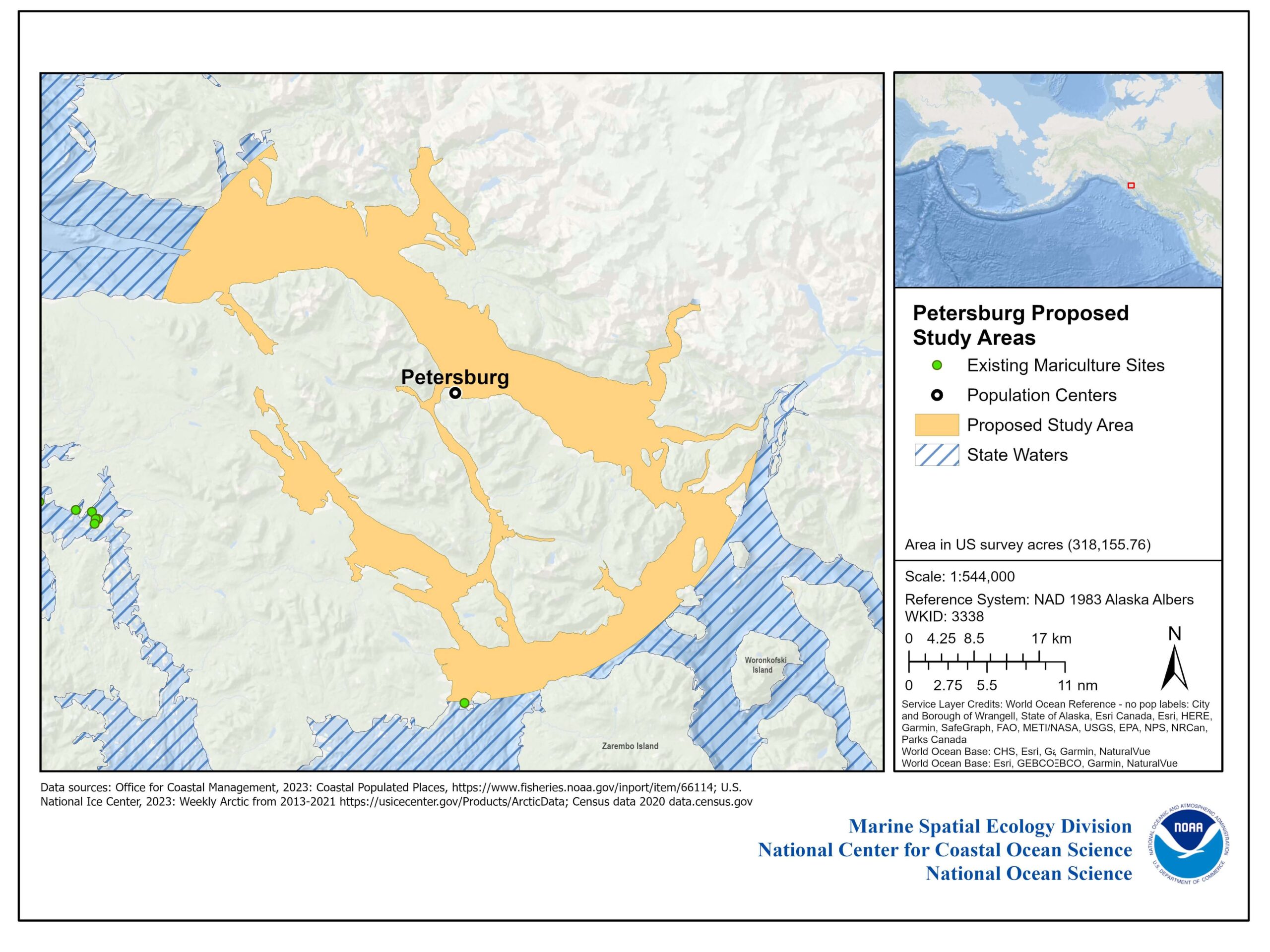
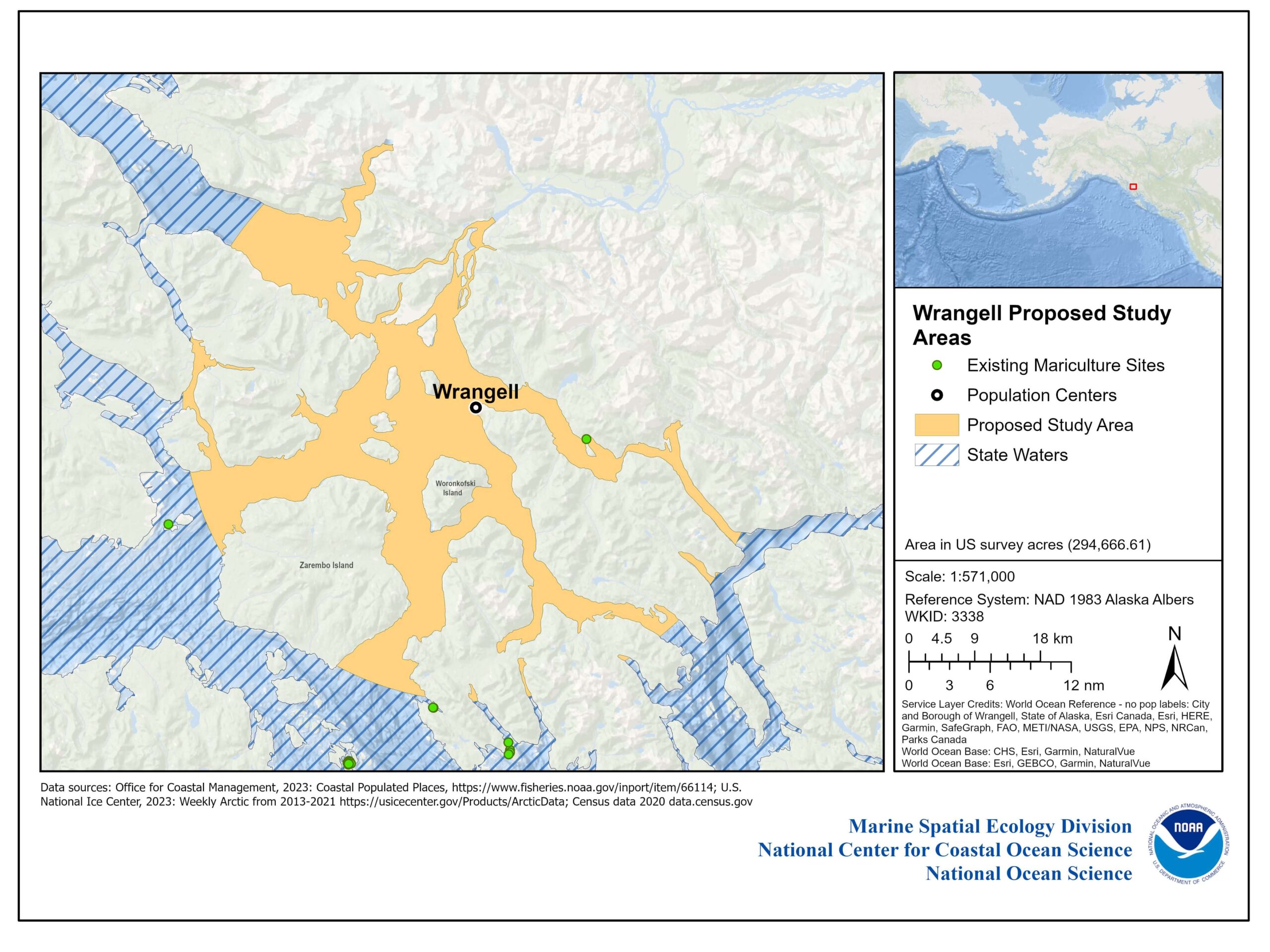
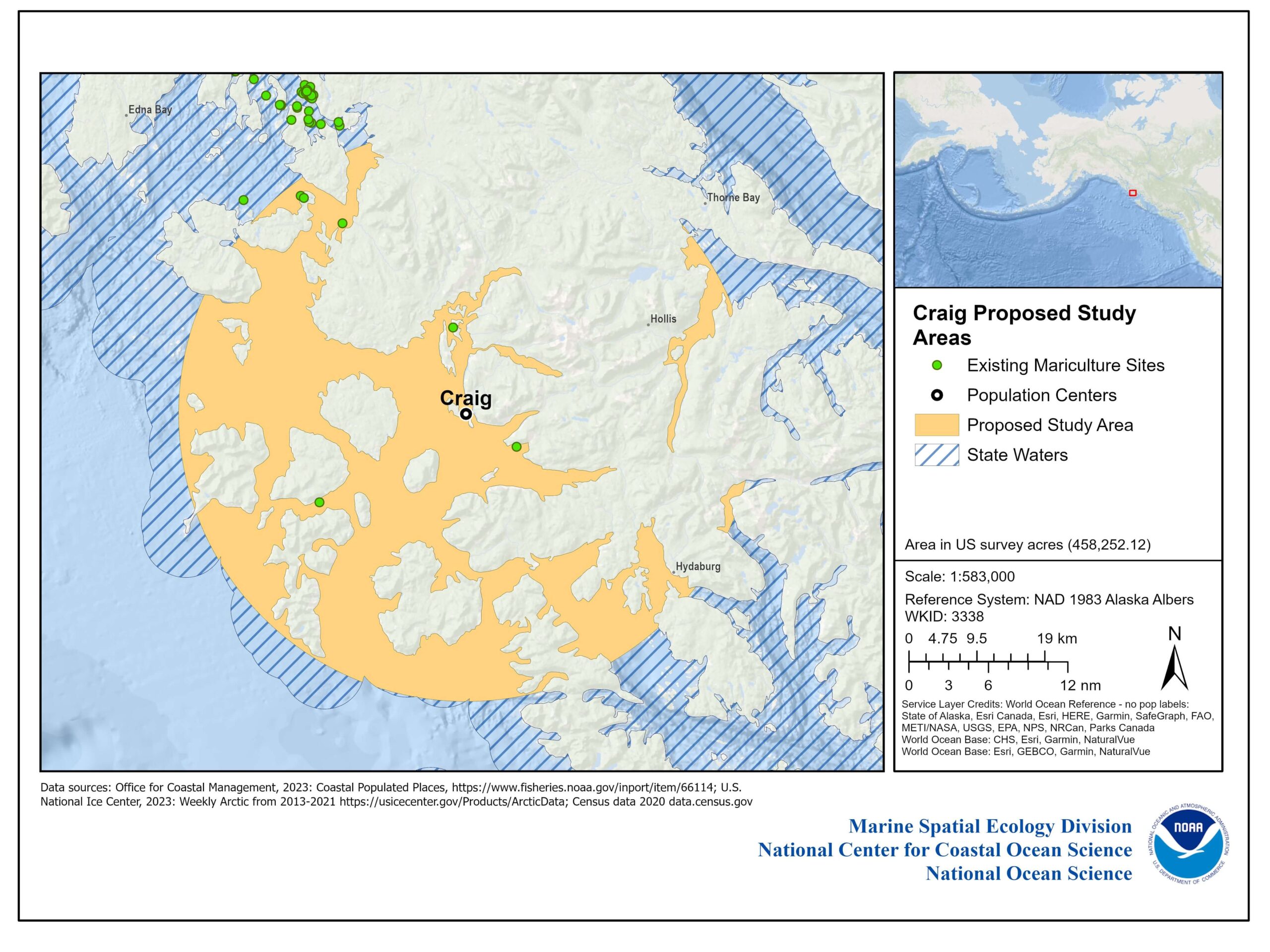
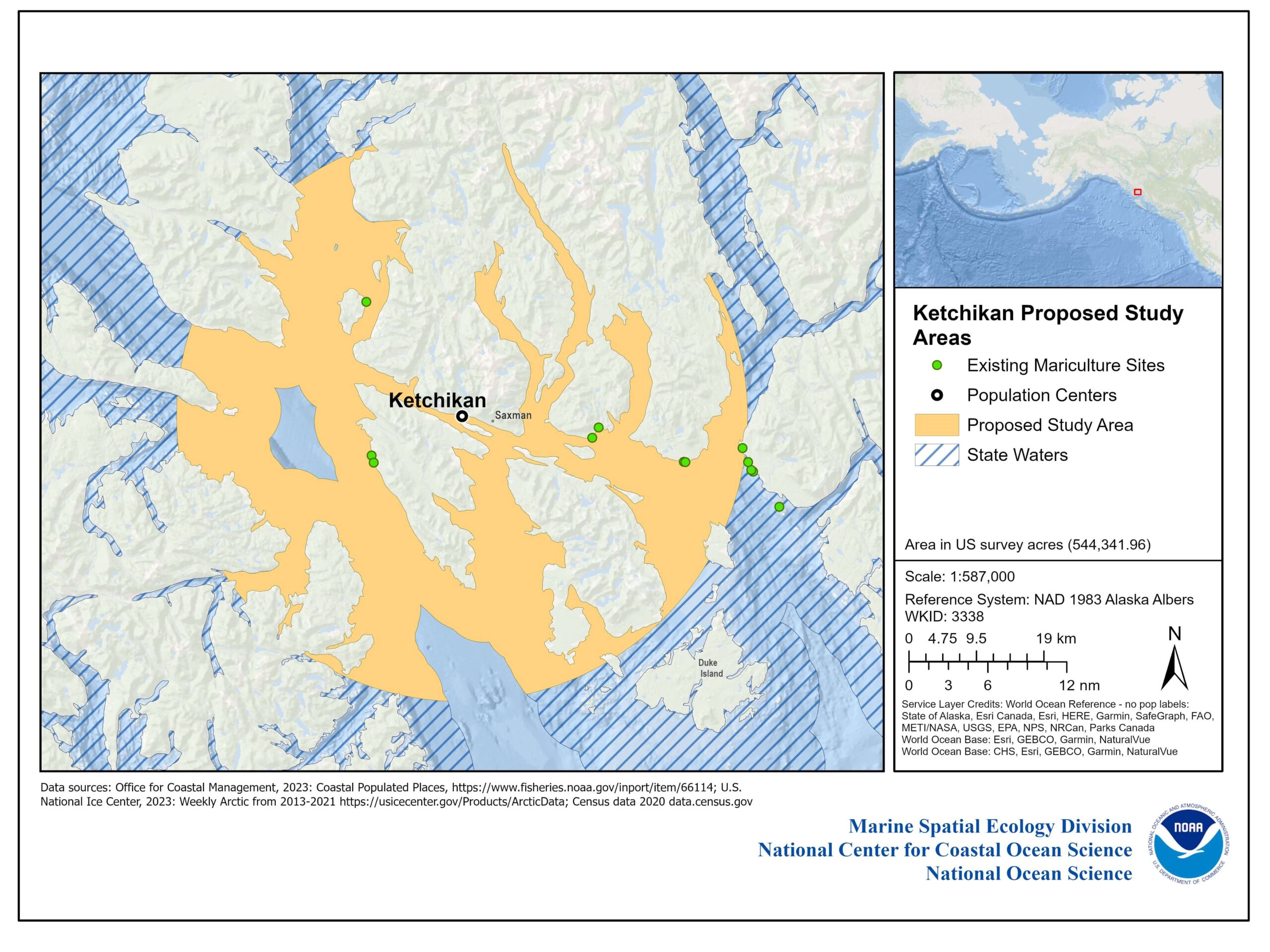

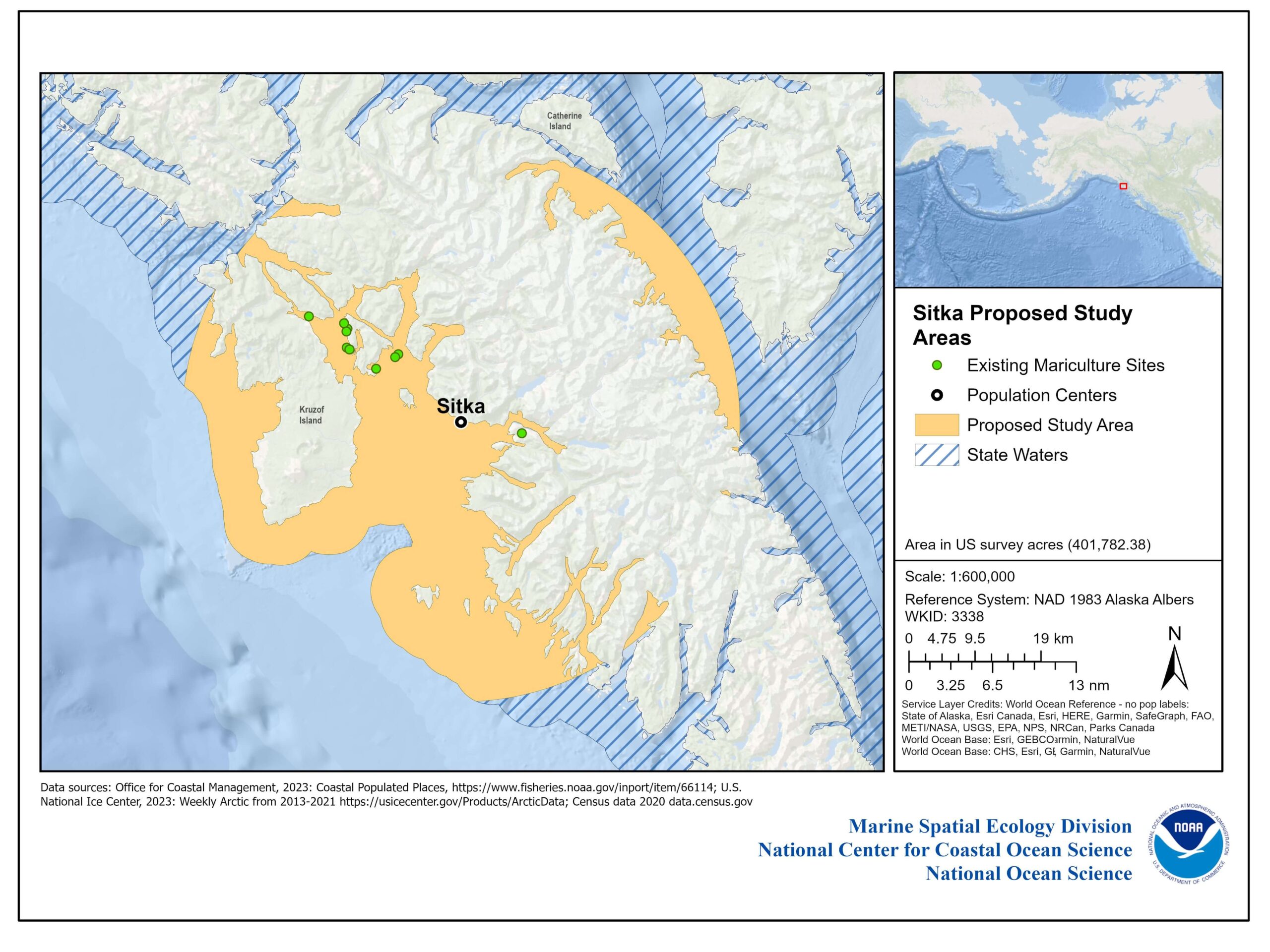
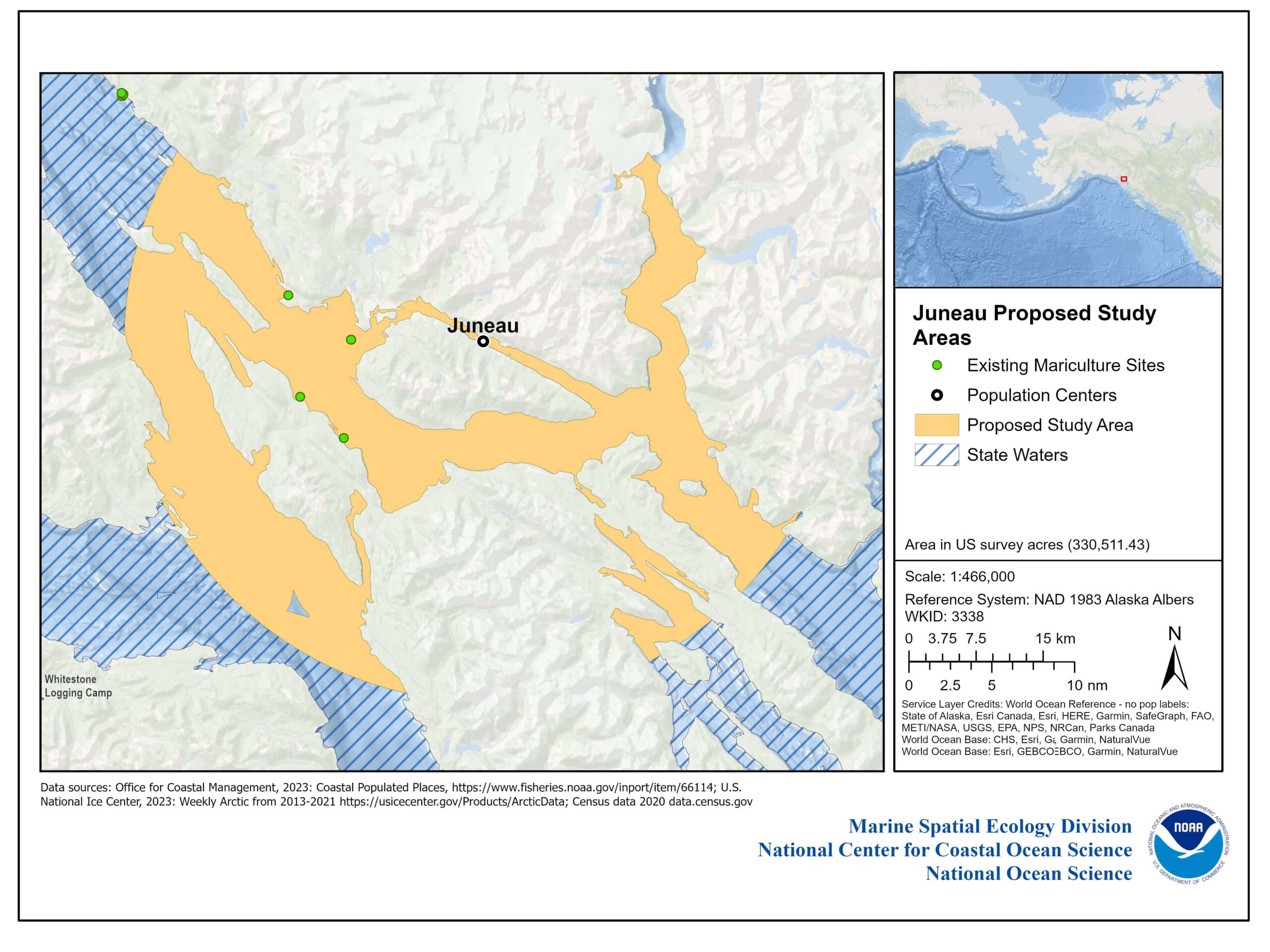
Southcentral
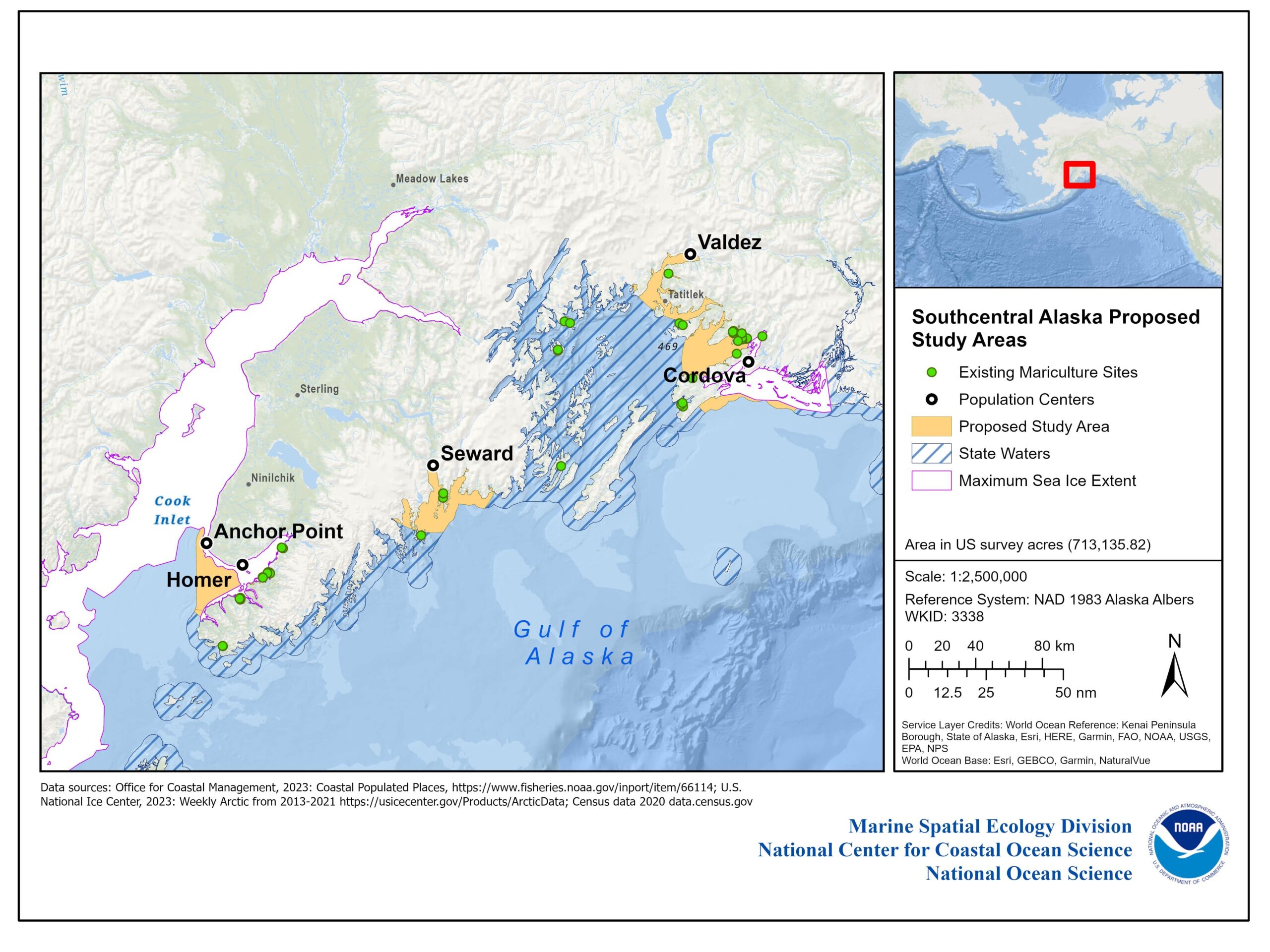
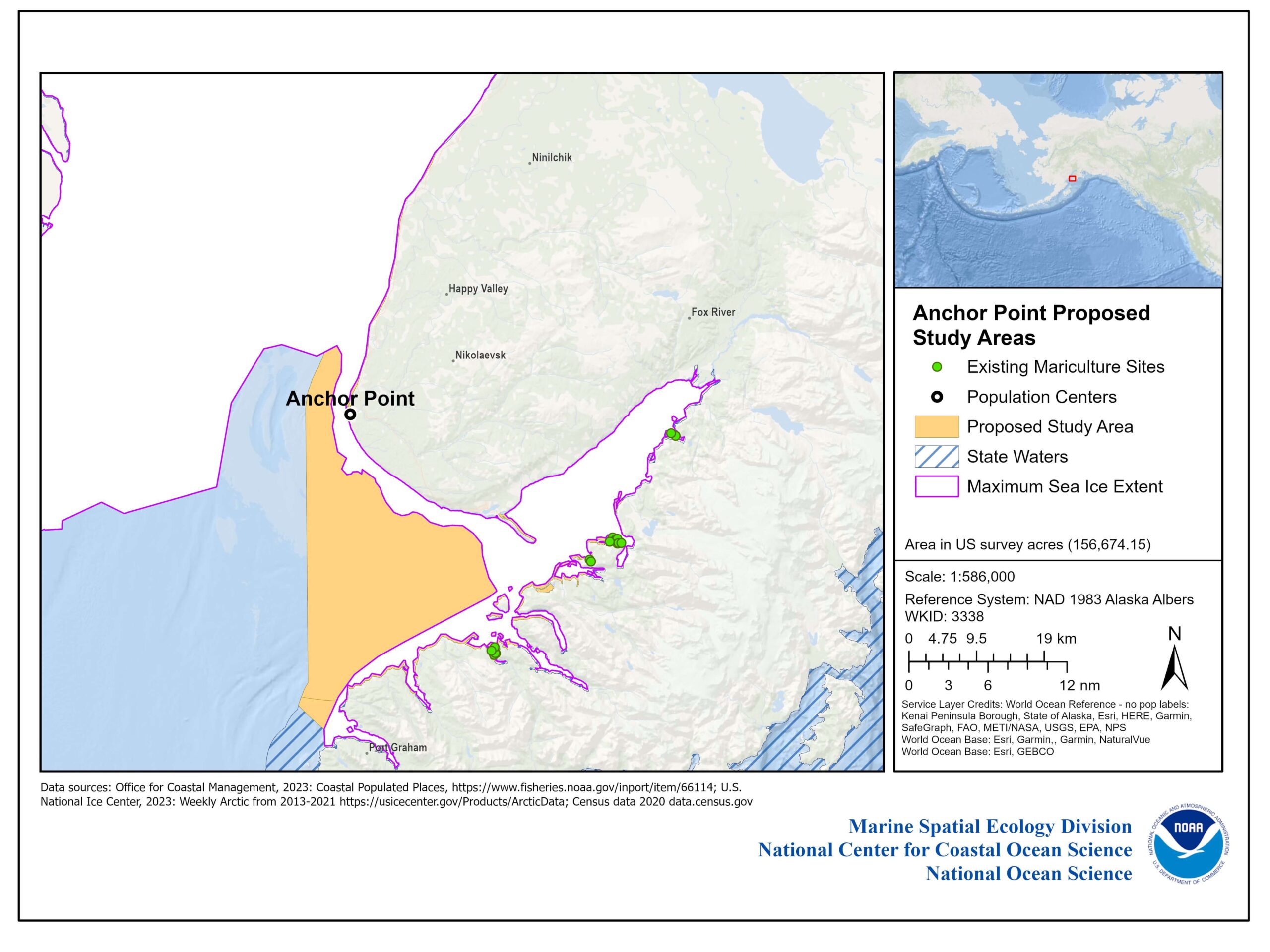
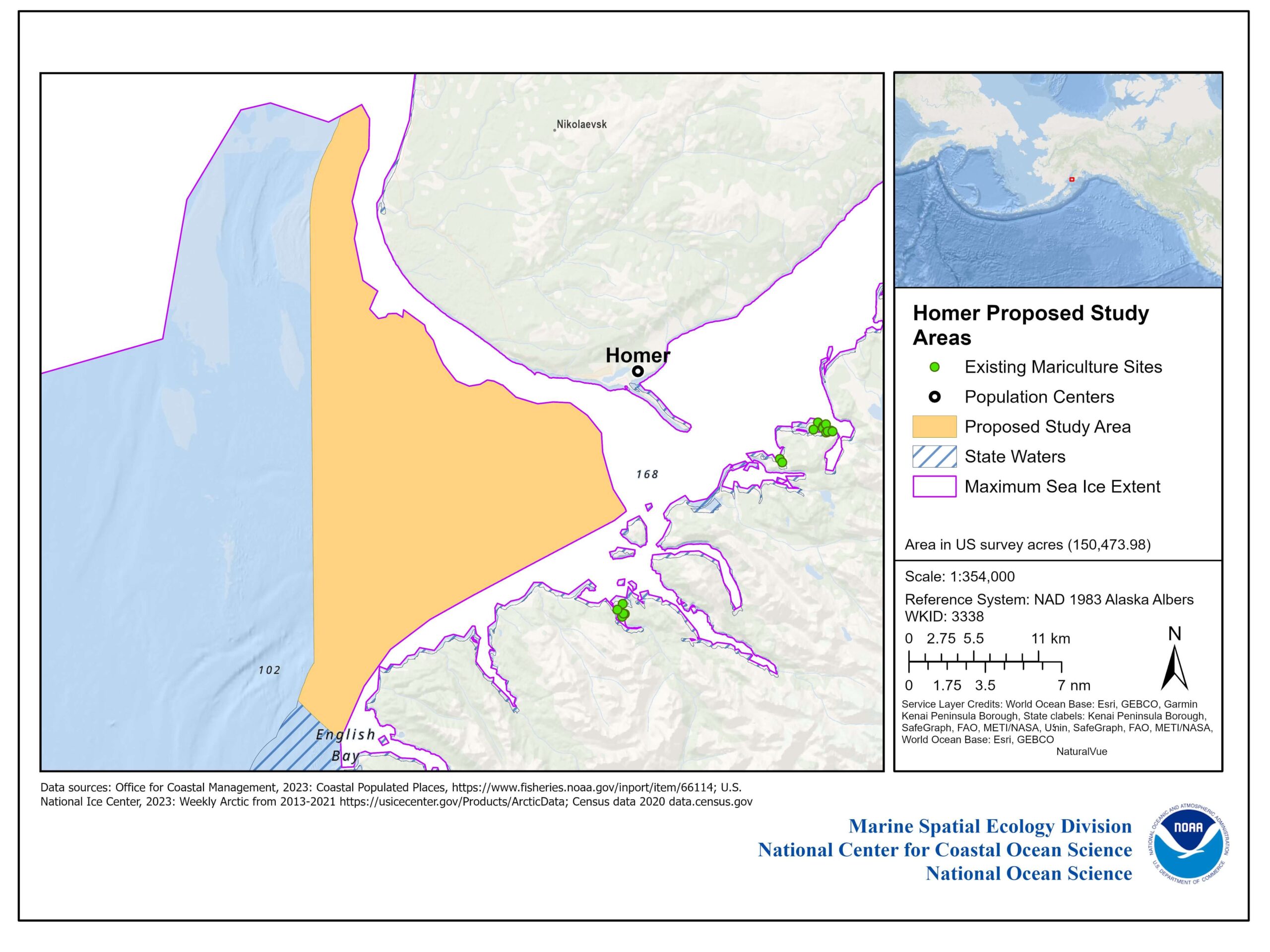
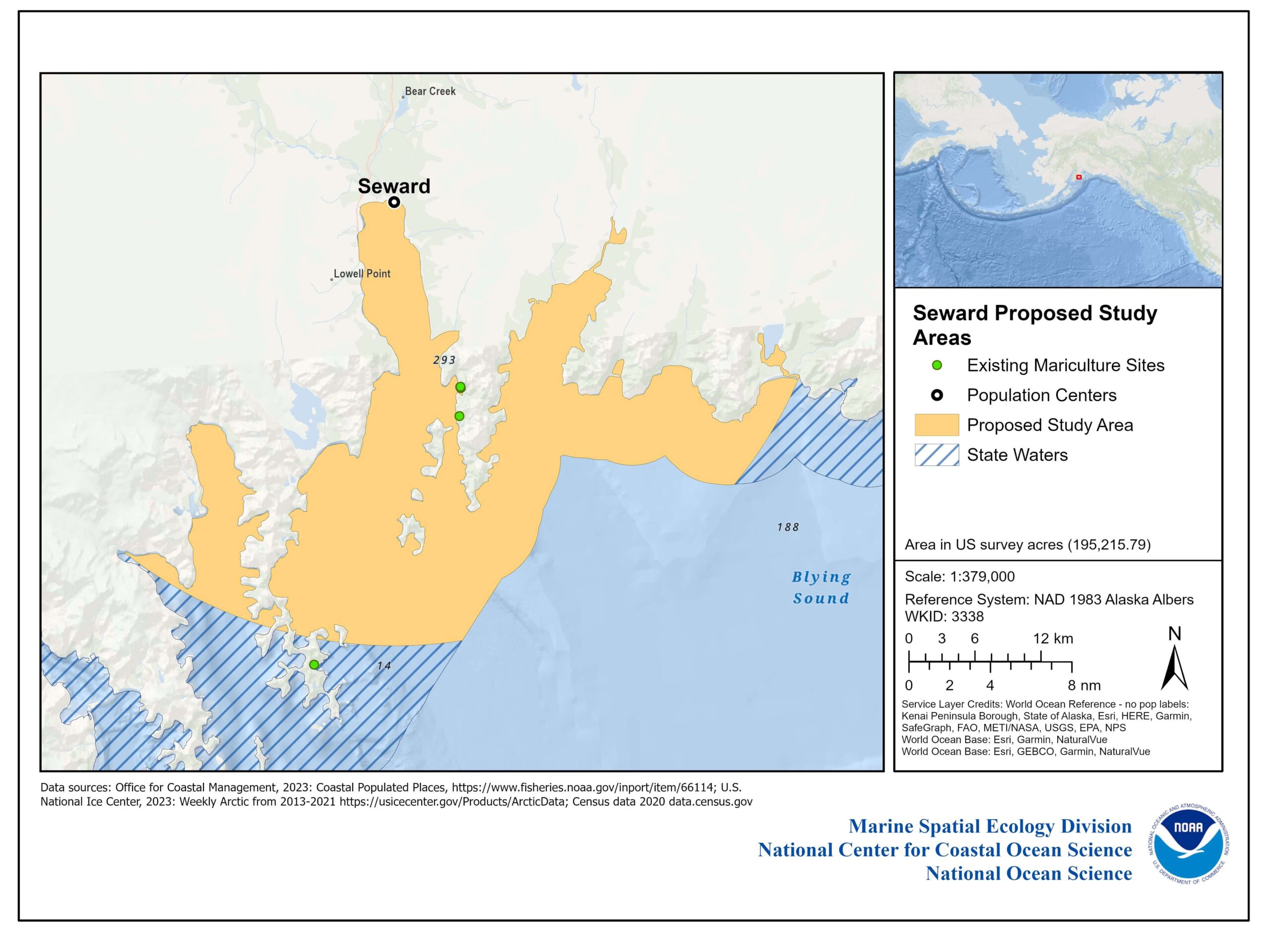


Kodiak

Southwest
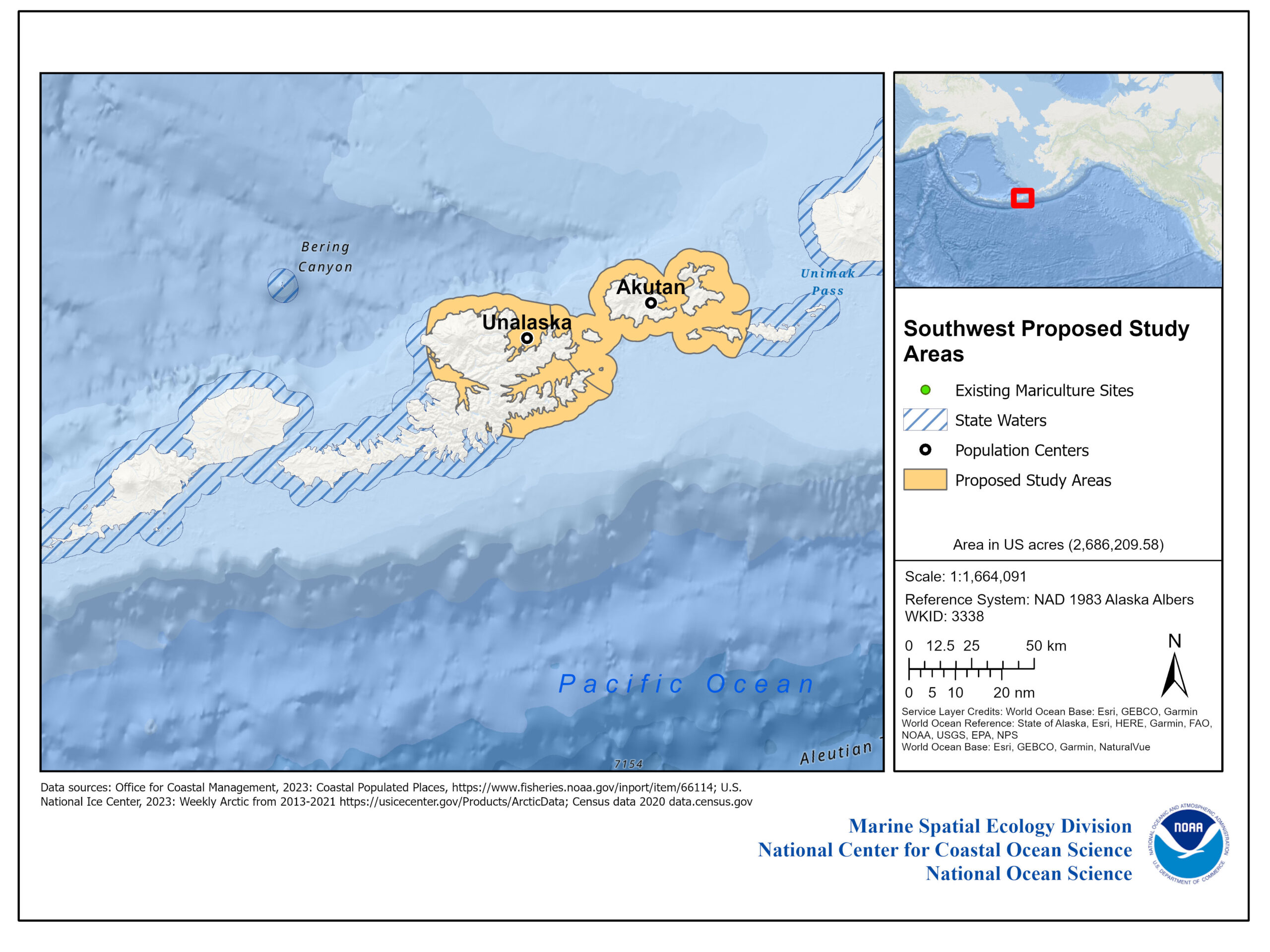
Unalaska
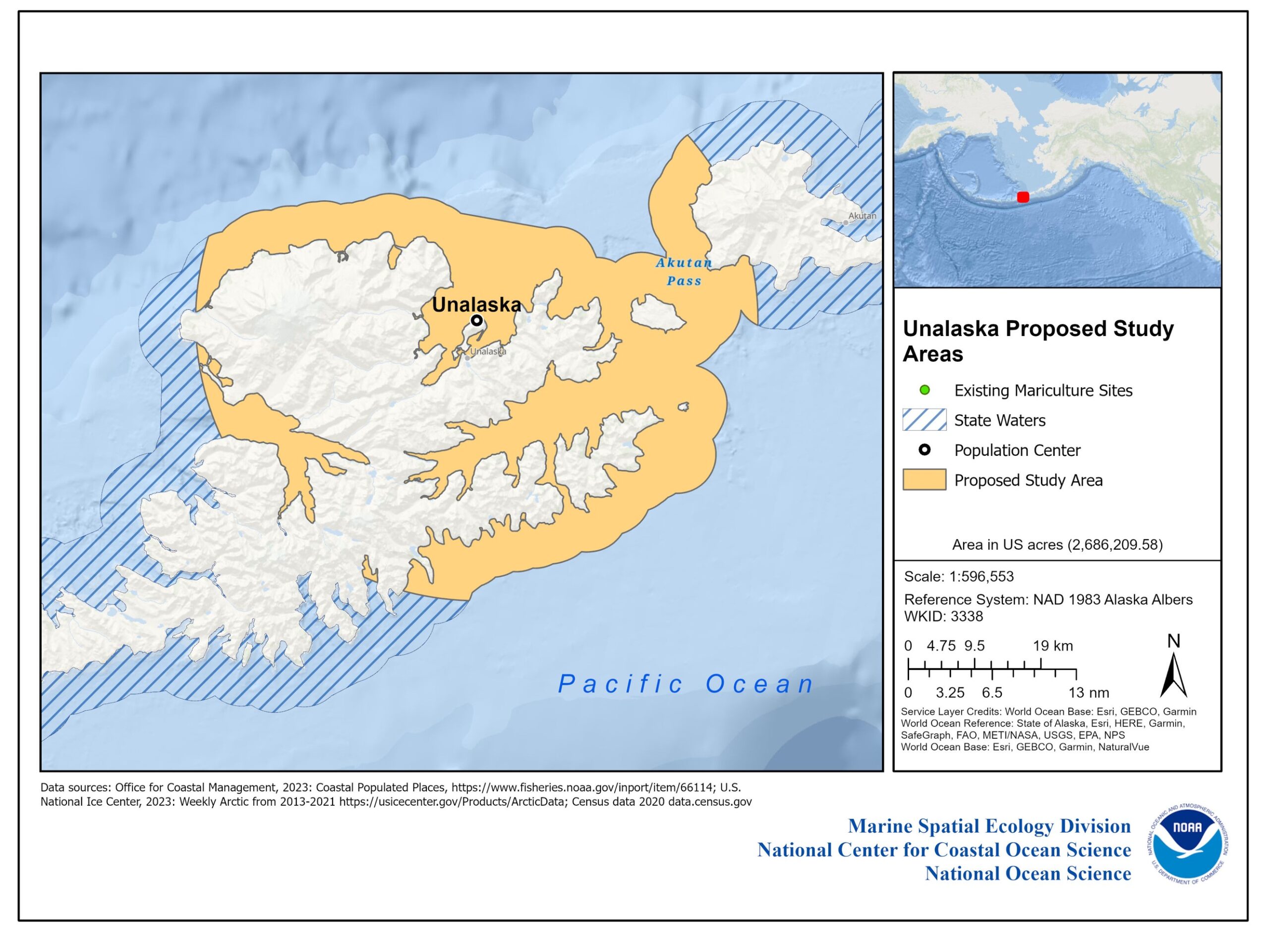
Akutan
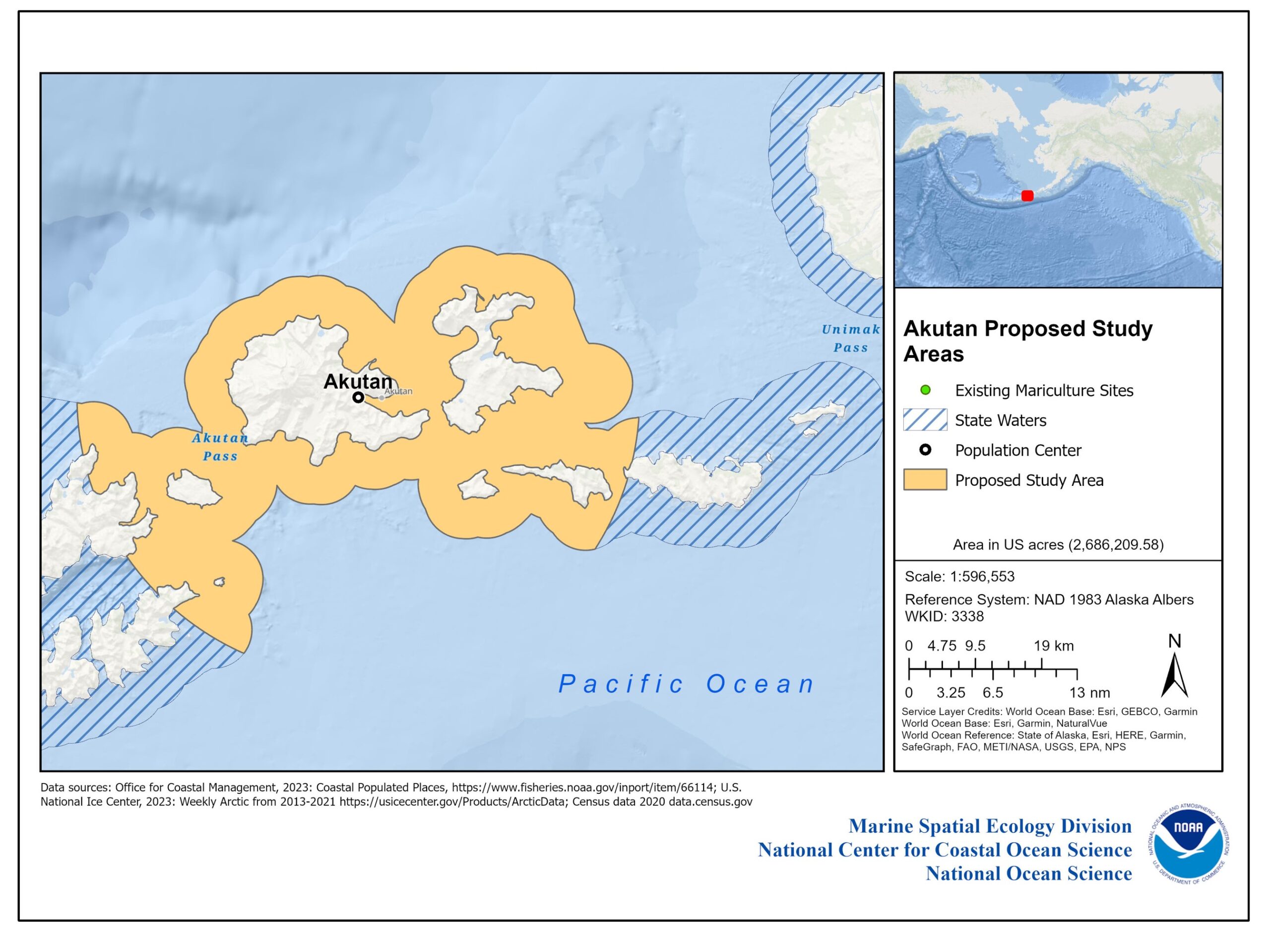
Following this public comment period to finalize the study areas, NOAA-NCCOS will use the best available data, as well as Indigenous Knowledge, to account for key environmental, economic, social, and cultural considerations to identify areas that may support sustainable aquaculture development while minimizing environmental impacts and conflicts with other ocean uses.
Public insights are crucial in shaping this effort. Participate in the Request for Information (RFI) process to contribute to the future of Alaska’s aquaculture.
